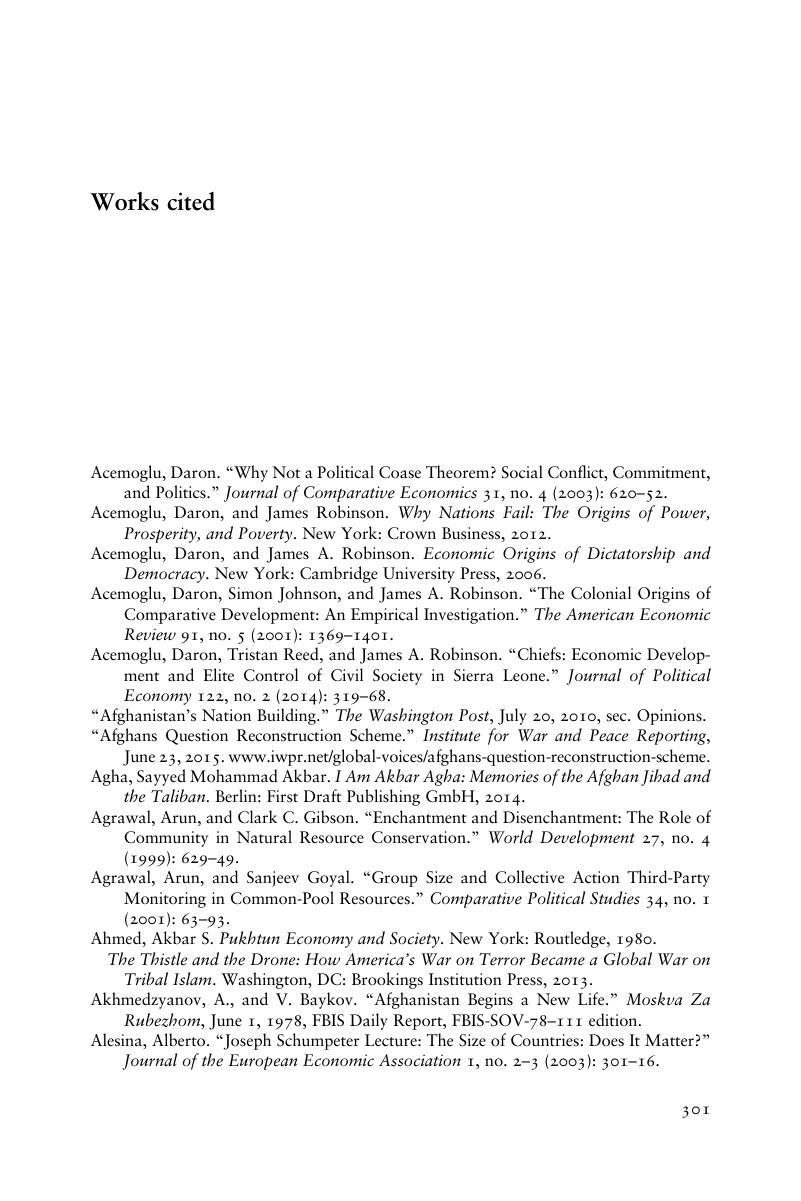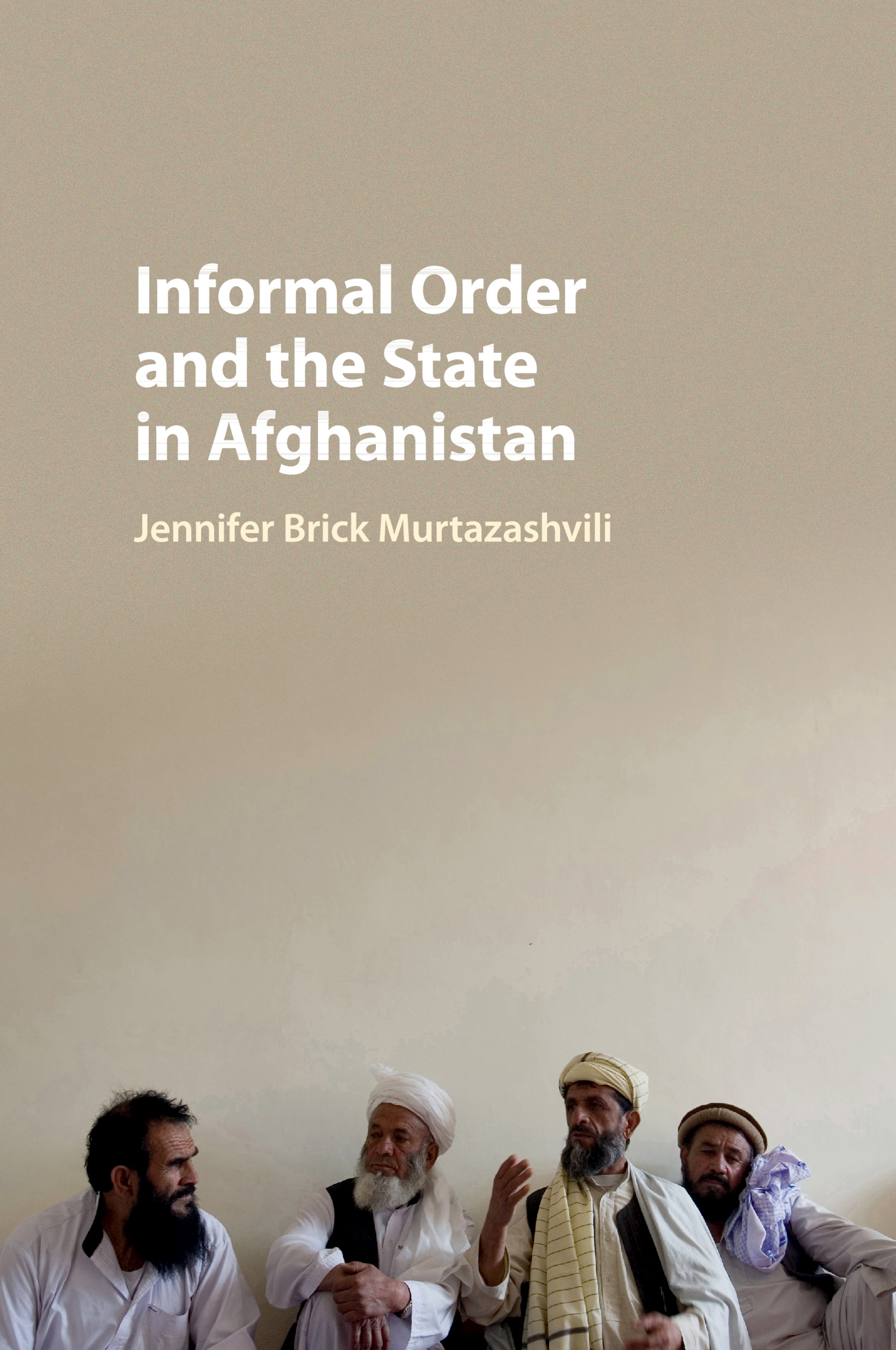Book contents
- Informal Order and the State in Afghanistan
- Informal Order and the State in Afghanistan
- Copyright page
- Dedication
- Additional material
- Contents
- Tables
- Glossary
- Acronyms
- Book part
- Preface
- 1 Introduction
- Part I The politics of customary governance
- Part II Customary governance and public goods provision
- Part III Customary governance and the state
- Book part
- Works cited
- Index
- References
Works cited
Published online by Cambridge University Press: 05 April 2016
- Informal Order and the State in Afghanistan
- Informal Order and the State in Afghanistan
- Copyright page
- Dedication
- Additional material
- Contents
- Tables
- Glossary
- Acronyms
- Book part
- Preface
- 1 Introduction
- Part I The politics of customary governance
- Part II Customary governance and public goods provision
- Part III Customary governance and the state
- Book part
- Works cited
- Index
- References
Summary

- Type
- Chapter
- Information
- Informal Order and the State in Afghanistan , pp. 301 - 320Publisher: Cambridge University PressPrint publication year: 2016



